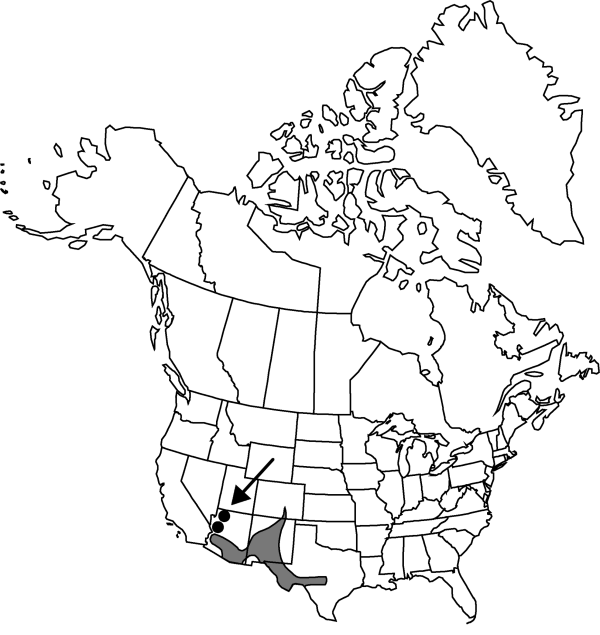Echinocereus coccineus
in F. A. Wislizenus, Mem. Tour N. Mexico, 93. 1848.
Plants commonly 20–100 (–500) -branched, loosely aggregated into clumps or tightly packed into rounded mounds, to 100 cm diam. Stems erect, cylindric (or spheric), 5–40 × 4–15 cm; ribs (5–) 6–14, crests slightly (or conspicuously) undulate; areoles 10–20 (–42) mm apart. Spines (1–) 5–16 (–22) per areole, mostly straight except on unusually long-spined individuals, ashy white to gray, brown, yellowish, reddish, or black, often dark tipped; radial spines (1–) 4–13 (–18) per areole, appressed to slightly projecting, (3–) 5–40 (–49) mm; central spines 0–6 per areole, spreading to projecting outward, terete (to angular), (5–) 10–80 mm. Flowers unisexual, (2.5–) 3.8–8 (–9) × (1.5–) 3–7 cm; flower tube (12–) 15–40 × 8–30 mm; flower tube hairs usually 1–2 mm; inner tepals crimson or scarlet, less often orange-red (very rarely rose-pink), with or without whitish or yellowish (or pink) proximal portion, usually 14–40 × 5–16 mm, tips thick and rigid; anthers usually pink or purple (rarely yellow); nectar chamber 4–10 mm (longer if measurement includes tube formed by connate stamen bases). Fruits greenish or yellowish to pinkish, bright red or brownish tinged, 20–40 (–72) mm or less, pulp white. 2n = 44.
Phenology: Flowering late Mar–Jun; fruiting 2-3 months after flowering.
Habitat: Chihuahuan Desert, desert scrub, desert grasslands, pinyon-juniper and oak woodlands, Great Plains grasslands, montane forest, bajadas, rocky slopes, and cliffs, igneous, metamorphic, and limestone substrates
Elevation: 150-2700(-3000) m
Distribution

Ariz., Colo., N.Mex., Tex., Mexico (Chihuahua), Mexico (Coahuila), Mexico (Sonora)
Discussion
Tetraploids belonging to Echinocereus coccineus constituted the greater part of L. D. Benson’s concept (1969, 1969b, 1969c, 1982) of E. triglochidiatus var. melanacanthus (see also discussion under 12. E. triglochidiatus). Where sympatric, the diploids and tetraploids are usually different in appearance, except in southeastern Arizona and extreme southwestern New Mexico (see discussion under 13. E. arizonicus), and in northern Arizona.
The common, tetraploid, claret-cup cacti of southeastern Arizona mountain ranges have bisexual flowers, and they have been named Echinocereus santaritensis W. Blum & Rutow. Similar plants from southwestern New Mexico are the basis for E. coccineus subsp. aggregatus [also called E. aggregatus (Engelmann ex S. Watson) Rydberg].
Populations of Echinocereus coccineus form an intergrading series from densely spine-covered typical coccineus in Colorado and northern New Mexico to sparsely spined plants in west-central Texas. Populations in the mildest climates have strikingly large stems, but shrink when transplanted (D. Weniger 1970). Populations intermediate between those extremes in the El Paso region sometimes are segregated as E. coccineus subsp. rosei.
Populations in northwestern Arizona with unusually small, narrow flowers Echinocereus toroweapensis (P. C. Fisher) Fuersch appear identical to E. canyonensis Clover & Jotter (M. A. Baker, pers. comm.). A type specimen for E. toroweapensis was apparently never preserved, so the name may be invalid.
Populations in the granitic region of central Texas (chromosome number unknown), probably belonging in Echinocereus coccineus, have been called E. coccineus subsp. roemeri (Muehlenpfordt) W. Blum, Mich. Lange & Rutow. Spines are more numerous than in the surrounding populations on limestone.
Echinocereus coccineus var. gurneyi (L. D. Benson) D. Ferguson was based on a short-spined plant, apparently introgressed from E. dasyacanthus, and so it pertains to E. ×roetteri Rümpler in the broad sense. It is not a true geographic race of E. coccineus.
Echinocereus santaritensis and the diploid called E. nigrihorridispinus (see discussion under 13. E. arizonicus) are ecologically and reproductively segregated but difficult to distinguish morphologically, especially when sterile. Spines of E. santaritensis tend to be thinner but only extremes are identifiable by spine thickness alone. Arizona reports of E. triglochidiatus var. neomexicanus were based on robust individuals from both of those taxa, whereas slender-spined specimens were identified mostly as E. triglochidiatus var. melanacanthus. Arizona reports of E. polyacanthus were based on either the hairy salverform flowers of E. santaritensis or the robust plants of E. nigrihorridispinus.
Selected References
None.
Lower Taxa
No values specified."thick" is not a number.